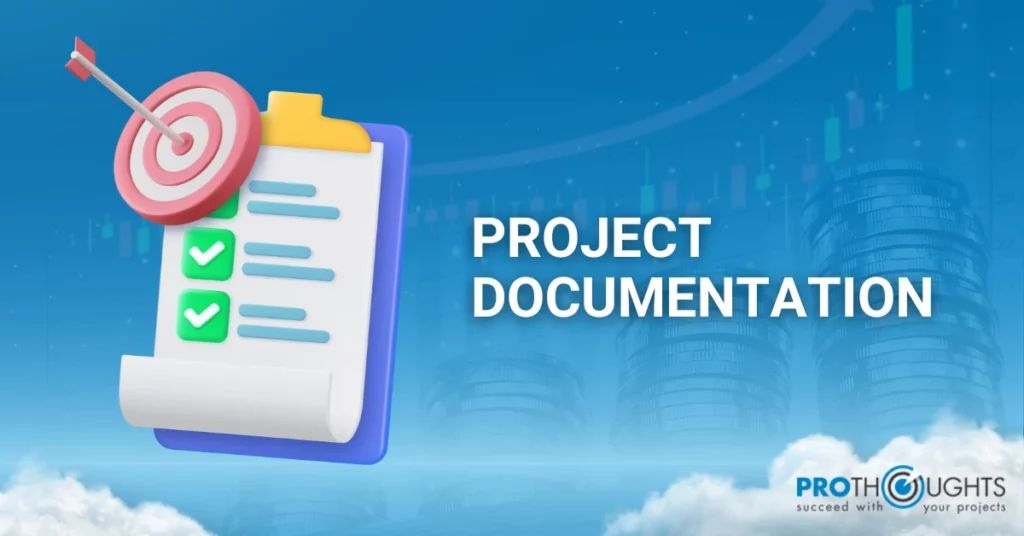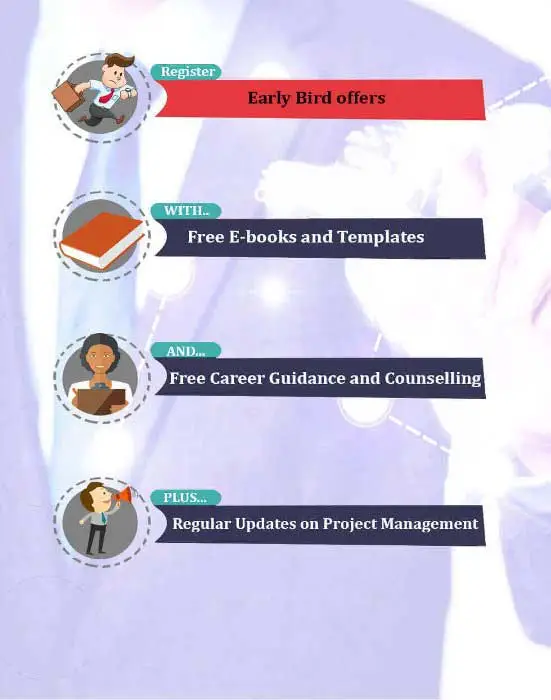As part of project management, documentation is essential in ensuring success and smooth execution. For professionals seeking to enhance their project management skills, understanding the importance of project documentation is necessary. PMP certification, a globally recognized credential for project managers, emphasizes the significance of project management documentation in its syllabus. By mastering project documentation techniques, professionals can improve their project planning, execution, and control abilities, ultimately leading to successful project outcomes.
Within this article, we’ll examine the concept of project documentation and its immense importance in the realm of project management. Undoubtedly, project documentation stands as a fundamental and indispensable aspect of effective project management, applicable to individuals in roles ranging from project managers and team members to those aspiring to attain PMP certification.
What is Project documentation?
Project documentation is a systematic and organized collection of documents created and maintained throughout the project life cycle. Additionally, these documents serve various purposes, such as planning, execution, monitoring, and project closure. They provide a detailed record of the project’s critical aspects, decisions, activities, and outcomes. Moreover, the documentation process is essential to project management, offering structure, communication, and accountability.
Importance of Documentation in Project Management
1. Accountability and Traceability
A. Holding Team Members Accountable for Their Tasks
Project management accountability refers to team members’ obligation to complete their assigned tasks and achieve project objectives. Documentation plays a crucial role in establishing and enforcing accountability.
Project documentation, such as the project management plan, task assignments, and work breakdown structure (WBS), clearly outlines who is responsible for each task and associated deadlines and deliverables. Additionally, this information serves as a reference point for team members, making it explicit what is expected of them.
Project managers can hold team members accountable for their contributions by documenting task assignments and responsibilities. Moreover, this clarity helps prevent misunderstandings about roles and expectations, ensuring that individuals understand the tasks they are responsible for within the project.
B. Providing a Traceable History of Project Decisions
Traceability in project management involves tracking and understanding the history of decisions, changes, and events throughout the project life cycle. Documents such as meeting minutes, decision logs, and change control records capture the rationale behind decisions, the individuals involved, and the outcomes. Additionally, this traceability allows project managers and stakeholders to understand the context and evolution of the project.
Decisions made at one point may impact the project in complex projects later. It is easier for project managers to improve future decision-making by evaluating the reasoning behind prior decisions. Also, it provides transparency, aiding in audits or reviews.
Furthermore, the importance of documentation in project management is highlighted in its role in accountability and traceability. In addition to ensuring accountability, clear documentation of team tasks and responsibilities will facilitate learning, provide context, and facilitate effective project risk management.
2. Knowledge Transfer
A. Facilitating Seamless Onboarding of New Team Members
Knowledge transfer in project management involves the effective communication and sharing of information, skills, and insights among team members, especially during transitions like onboarding.
Project documentation is a comprehensive resource for new team members joining a project. It includes vital documents such as the Project Plan, WBS, Communication Plan, and progress reports, providing a structured introduction to the project’s objectives, tasks, and communication protocols.
Additionally, facilitating seamless onboarding through documentation ensures new team members quickly understand the project’s context, goals, and roles. Also, it accelerates the integration of new members into the team, reducing the time it takes them to become productive contributors.
B. Preserving Institutional Knowledge for Future Projects
Institutional knowledge refers to the collective wisdom, experience, and insights a team or organization gains over time. Preserving this knowledge is essential for continuous improvement and future project success. Moreover, project documentation is a repository of institutional knowledge by capturing project management best practices and insights gained during the project. This can include post-project reviews, documentation of challenges faced, and successful strategies employed.
Furthermore, preserving institutional knowledge ensures that valuable lessons from one project are not lost but rather contribute to the improvement of future projects. It enhances organizational memory, allowing teams to build on past successes and avoid repeating mistakes.
Therefore, knowledge transfer through project documentation is instrumental in onboarding new team members and preserving institutional knowledge for future projects. It ensures a smooth transition for new team members by providing a structured introduction to the project, roles, and communication protocols. Simultaneously, it captures valuable insights and experiences, contributing to continuous improvement and success in subsequent projects.
3. Compliance and Auditing
A. Meeting Regulatory Requirements
Compliance in project management involves adhering to relevant laws, regulations, and standards applicable to the project. Project documentation is crucial in ensuring that the project aligns with these requirements. Additionally, documents such as the project plan, risk register, and change control documentation play a role in demonstrating that the project is being executed following regulatory standards. Moreover, compliance may involve data protection, safety regulations, or industry-specific standards.
Also, meeting regulatory requirements through documentation avoids legal consequences and fosters a culture of responsibility and ethical conduct within the project team.
B. Facilitating Project Audits for Continuous Improvement
Project audits involve systematic reviews of project processes, deliverables, and outcomes. It is a crucial resource during audits, providing evidence of project activities and decisions.
Additionally, meeting minutes, progress reports, and decision logs are critical for auditors to assess how the project was planned, executed, and controlled. The audit aims to identify areas of success, improvement, and compliance with project management basics.
Project audits, facilitated by comprehensive documentation, contribute to continuous improvement. They help organizations learn from past projects, refine processes, and implement best practices in subsequent projects.
Furthermore, project documentation is integral to compliance with regulatory requirements. It facilitates project audits for continuous improvement by aligning project plans with regulatory standards and providing a comprehensive record of project activities, decisions, and outcomes. Moreover, documentation ensures that projects are conducted ethically, legally, and in line with industry best practices. Therefore, audits facilitated by thorough documentation contribute to organizational learning and the enhancement of project management processes over time.
Types of Project Management Documents
The following are the detailed explanations for each of the project management documents
1. Project Charter
Project charters authorize projects’ existence, give project managers the authority to allocate organizational resources to tasks, and serve as contracts between the project team, project sponsor, and key stakeholders. Additionally, it outlines the project scope management, objectives, stakeholders, deliverables, and high-level timelines. Essentially, it sets the foundation for the project and defines its boundaries.
2. Project Plan
A project plan is an extensive record that outlines the project’s scope, goals, activities, timelines, resource needs, and the strategy for overseeing and carrying out the project. It functions as a guide for the project, dictating the methods by which it will be put into action, supervised, and regulated. Furthermore, it aids in guaranteeing that all participants have a clear understanding of their roles and duties.
3. Project Status Report
A project status report is a routine, snapshot-style record offering a summary of the present state of a project. It also encompasses crucial performance metrics, achievements, challenges, potential risks, and forthcoming project milestones. It keeps stakeholders informed about the project’s progress and highlights any challenges or changes in direction. As a result, decision-making is facilitated, and stakeholders are kept informed.
4. Risk Management Plan
A risk management plan is a document that outlines how risks will be identified, assessed, and managed throughout the project lifecycle. It includes strategies for mitigating or responding to potential threats. Moreover, it helps proactively identify and address potential issues that could impact the project’s success. By having a plan in place, the project team can minimize the impact of risks and ensure a more predictable outcome.
5. Communication Plan
A communication plan is a written document detailing the project’s communication strategy. It specifies who requires specific information when it’s needed, and the method of delivery. Moreover, the plan guarantees the precise dissemination of information to the appropriate individuals at the appropriate junctures. Effective communication is paramount to project success, and a communication plan aids in expectation management and keeping stakeholders well-informed.
6. Financial Plan
A project’s financial plan encompasses projections and distributions of expenses, financial allocations, and the resources needed to ensure the project’s successful culmination. It furnishes a comprehensive insight into the project’s financial facets, facilitating the processes of budgeting, cost management, and financial decision-making throughout the entire project duration.
7. Technical Document
Detailed technical information about the project, including system architecture, design specifications, coding standards, and various technical guidelines, is found in technical documents. Additionally, these documents function as a guide for the project team, particularly those participating in technical implementation. Their significance lies in ensuring that the project is developed and executed in alignment with the prescribed technical standards.
8. Rollout Plan
A rollout plan outlines the steps and activities involved in deploying the project’s deliverables or introducing the project’s outputs to the end-users or the wider audience. It provides a structured approach to implementing and integrating the project’s results into the operational environment. Additionally, it aids in reducing disturbances and guarantees a seamless shift from the project phase to the operational stage.
Furthermore, each of these papers plays a pivotal part in the PMP process, adding to the overarching triumph and effectiveness of the project.
Getting the Documentation Right: Tips for Success
1. Be well-organized
Set the right processes in place from the get-go, and do not leave all the documentation for a particular day of the week. You may forget to note down something of crucial importance. Communication often happens across multiple mediums, like chat, emails, and even WhatsApp or shared online folders. Thus, it assists in keeping all essential details in one place from the beginning, making it easier to note the most critical points.
2. Make sure the search feature is in place
Whatever document tool you use should allow for easy searching, both by name and date. The user interface must be easily understandable, even for someone new to it, and should have a straightforward navigation system.
3. Keep your details to a minimum
Details are not necessary in every document. Keep it crisp and concise without leaving out anything of critical importance. Moreover, just-in-time documentation is often followed in Agile, where a document contains only enough detail to get the task off the ground.
4. Share and collaborate
Share documents to maximize their utility. Keep your records in a live, evolving format, documenting all changes, and easily track progress in real-time.
Tools to Use for Project Documentation
Many online tools and trackers add immense value to project documentation. Streamlining and simplifying project documentation processes, Google Docs, Microsoft SharePoint, Asana, Proofhub, Trello, and Nuclino actively enhance efficiency and collaboration. In addition, depending on how mature your project team is, you can pick an agency that offers the most appropriate solutions to share knowledge and track progress.
Pick the right tool based on these parameters:
- All project stakeholders should be able to use it without special training.
- Searching and navigating should be easy.
- Multiple users should be able to use it simultaneously without losing information.
- If multiple logins are needed, they should be able to be locked so that data is not accidentally deleted.
- It should be easily integrated with other software.
Conclusion
Project documentation is the backbone of successful project management, ensuring effective communication, decision-making, and overall project success. Its importance is particularly emphasized in PMP certification online training, where professionals learn to navigate complex project scenarios. Mastering documentation practices is not just a certification requirement but a vital skill for real-world project management, offering a roadmap for teams and a valuable reference for future endeavors. So, enroll today to take the first step toward mastering this critical aspect of project management.



